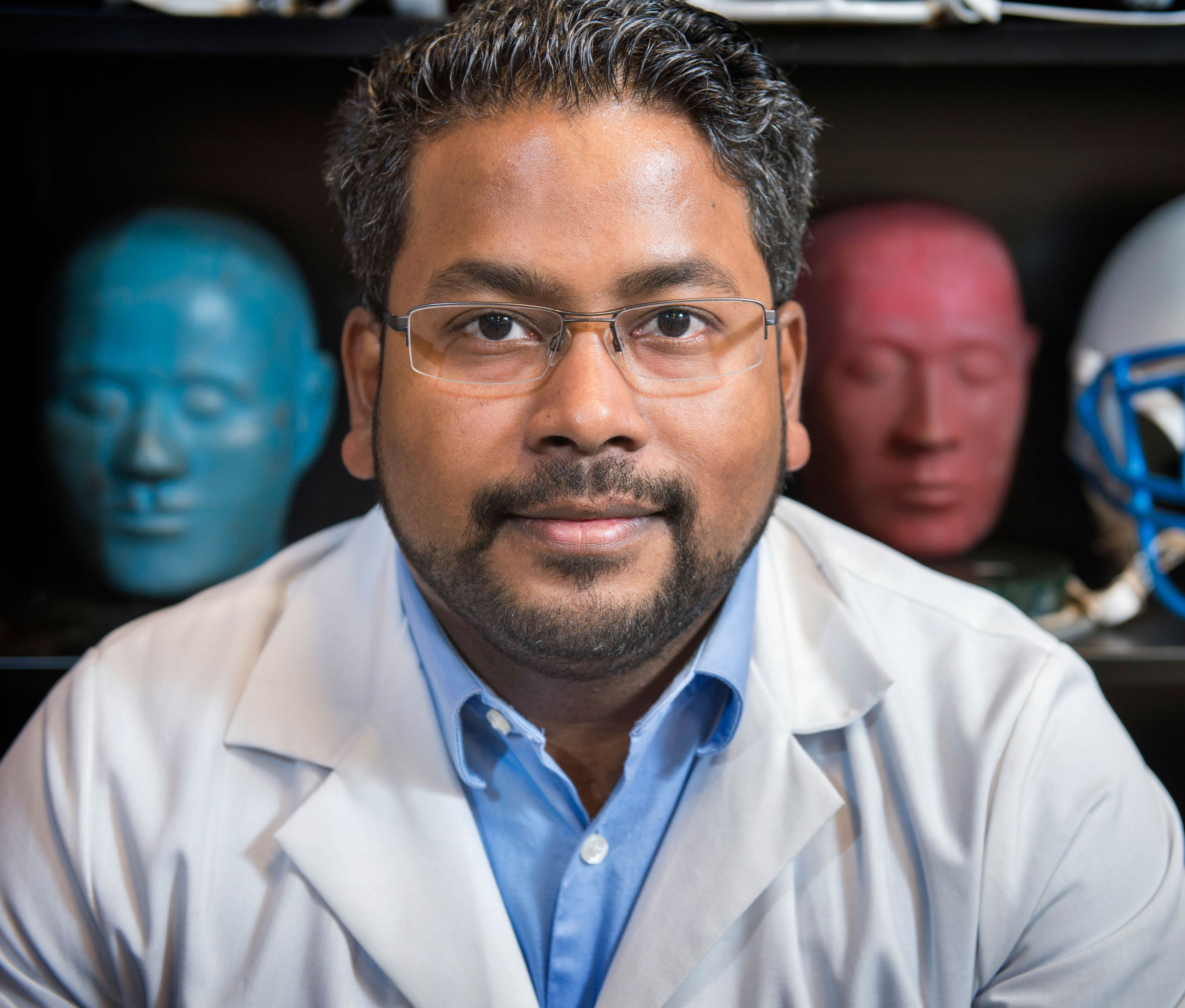Virtual brain model changes understanding of traumatic injury
March 1, 2014
 A model developed by a team of Bagley College biomedical engineers will redefine the understanding of traumatic brain injury.
A model developed by a team of Bagley College biomedical engineers will redefine the understanding of traumatic brain injury.
Challenging more than 20 years of conventional wisdom, the BCoE’s human body simulation group developed a virtual model of the human brain that shows shockwaves traveling through hard tissue, like bone, as well as the soft tissue rather than directly impacting the gray matter alone.
“We wanted to study what happens at each scale from the individual atoms to the tissue as a whole, and that’s exactly what we’re doing,” Raj Prabhu said.
Traditionally, traumatic injury has been studied using an animal model or synthetic material to approximate the reaction that would occur in human tissue. However, Prabhu explained that these alternative models lack the coupled geometrical and biochemical processes that are present in human bodies.
To overcome this obstacle, the research group is developing a virtual model that accurately depicts the structures of the human brain from the smallest atom at the microscale to the tissue that can be seen with the naked eye. By applying the physical properties of human tissue to the model, the researchers can then run simulations of different types of trauma to see exactly how it affects the brain at all levels.
“Our virtual brain is the most accurate solution to show what happens to all of the tissue when a trauma occurs,” Prabhu said. “By using multiscale modeling we’ve been able to capture the physics and biomechanics that occur across the board, which will allow us to see what kinds of impact cause injury and where those injuries occur.”
Multiscale modeling is a common practice in composite materials and automotive structure development, however, it has not been widely applied to developing high fidelity human models.
“Learning to develop multiscale models is like a whole new language in the field of biomedical engineering,” explained Lakiesha Williams, an assistant professor and group leader. “We’re going against the grain, and some people won’t see the need for these complex models since there are other models in existence, but many of those are very simplistic. Our physics-based models will help us understand so much more.”
Now an assistant research professor and a thrust leader in the human body simulation group, Prabhu began developing the virtual brain as a doctoral student under the guidance Mark F. Horstemeyer, a professor and endowed chair in computational solid mechanics. With the completion of the multiscale brain model, the group now has many more projects on the horizon.
“Now that we know exactly what happens in the brain, we know how to go about designing the protective gear,” Prabhu said. “Ultimately, our goal is to complete a model, with this level of detail, for the whole human body.”
By: Susan Lassetter
